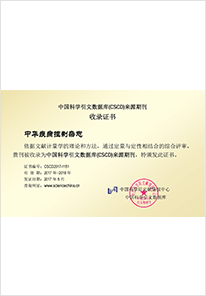2020 Vol. 24, No. 3
Display Method:
2020, 24(3): 249-252.
doi: 10.16462/j.cnki.zhjbkz.2020.03.001
Abstract:
2020, 24(3): 253-257.
doi: 10.16462/j.cnki.zhjbkz.2020.03.002
Abstract:
2020, 24(3): 258-263.
doi: 10.16462/j.cnki.zhjbkz.2020.03.003
Abstract:
2020, 24(3): 269-273.
doi: 10.16462/j.cnki.zhjbkz.2020.03.005
Abstract:
2020, 24(3): 274-278.
doi: 10.16462/j.cnki.zhjbkz.2020.03.006
Abstract:
2020, 24(3): 284-289.
doi: 10.16462/j.cnki.zhjbkz.2020.03.008
Abstract:
2020, 24(3): 290-296.
doi: 10.16462/j.cnki.zhjbkz.2020.03.009
Abstract:
2020, 24(3): 297-302.
doi: 10.16462/j.cnki.zhjbkz.2020.03.010
Abstract:
2020, 24(3): 303-307.
doi: 10.16462/j.cnki.zhjbkz.2020.03.011
Abstract:
2020, 24(3): 314-318.
doi: 10.16462/j.cnki.zhjbkz.2020.03.013
Abstract:
2020, 24(3): 319-323.
doi: 10.16462/j.cnki.zhjbkz.2020.03.014
Abstract:
2020, 24(3): 330-334.
doi: 10.16462/j.cnki.zhjbkz.2020.03.016
Abstract:
2020, 24(3): 335-340.
doi: 10.16462/j.cnki.zhjbkz.2020.03.017
Abstract:
2020, 24(3): 341-347.
doi: 10.16462/j.cnki.zhjbkz.2020.03.018
Abstract:
2020, 24(3): 354-358.
doi: 10.16462/j.cnki.zhjbkz.2020.03.020
Abstract:
2020, 24(3): 365-368.
doi: 10.16462/j.cnki.zhjbkz.2020.03.022
Abstract:
2020, 24(3): 369-372.
doi: 10.16462/j.cnki.zhjbkz.2020.03.023
Abstract:


 Email alert
Email alert RSS
RSS Abstract
Abstract HTML
HTML PDF
PDF





